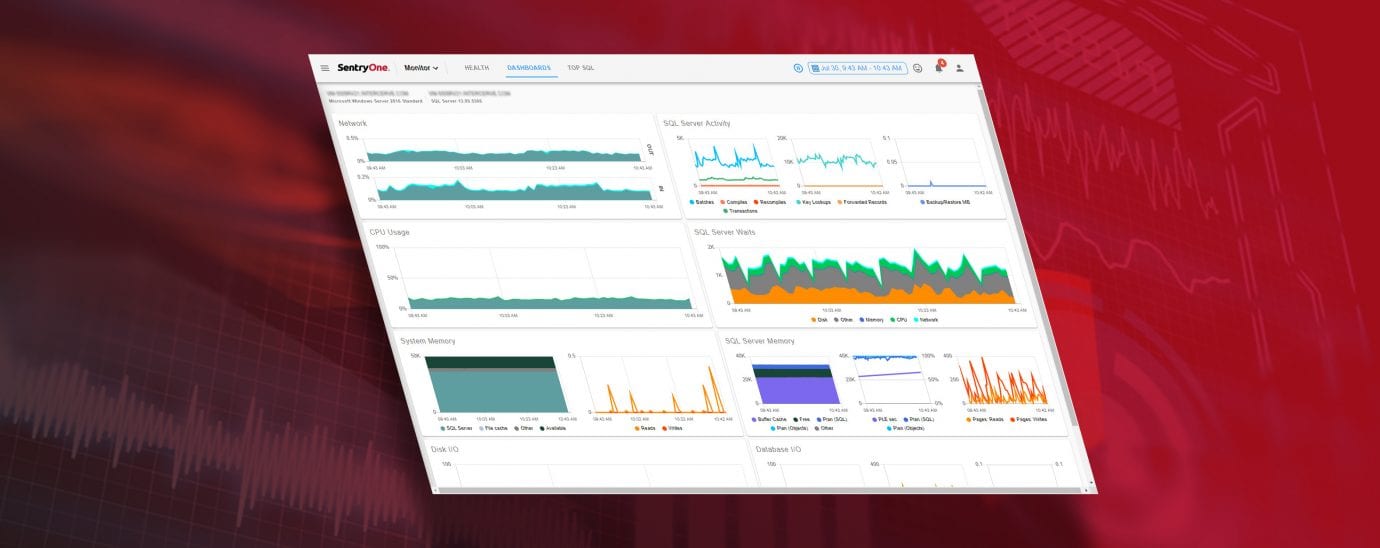SentryOne Releases Premium Edition of SQL Sentry

SentryOne announced the general availability of SQL Sentry Premium, a new edition of its flagship database performance monitoring solution. With the introduction of SQL Sentry Premium, the company has consolidated the functionality of several of its database performance monitoring products, including BI Sentry (for SQL Server Analysis Services), DB Sentry (for Azure SQL Database), Win Sentry (for Windows virtualized environments), and V Sentry (for VMware hosts), into SQL Sentry Premium. The consolidation of monitoring for all supported target types gives data professionals visibility into performance across their entire data estate.
“By rolling the capabilities of these products into SQL Sentry, we can offer our customers a more streamlined experience, both in buying and using the product,” said Greg Gonzalez, SentryOne Chief Scientist and Founder.
“The new edition reflects the feedback we’ve received from customers who want to choose the right mix of capabilities for the environment versus worrying about which license types to purchase. As an example, rather than buying a separate license for monitoring SQL Server Analysis Services, data teams can use SQL Sentry Premium to monitor it or any of the other supported target types.”
The new edition supports SQL Server and related systems running on physical, hybrid, or cloud environments and includes all of SQL Sentry’s powerful monitoring capabilities. These capabilities include index analysis and management, SQL Server job management, disk storage forecasting, monitoring for SQL Server Always On availability groups, proven scalability, and other features that help ensure fast, continuous database performance for high-volume data environments.

SQL Sentry Premium is available only by subscription, a licensing model that offers flexibility and lower up-front costs for SentryOne customers and allows a continuous feedback exchange about product enhancements between customers and the SentryOne team. Customers who currently hold SQL Sentry subscription licenses will be upgraded to SQL Sentry Premium licenses.
“Although we will retain the perpetual license option of our existing SentryOne monitoring products for longtime customers who need that, we’re hearing from more customers and prospects that they prefer subscription licensing for technology purchases,” said Douglas McDowell, SentryOne Chief Strategy Officer. “By introducing SQL Sentry Premium, we’re providing technology that we can extend with SaaS capabilities and update on a continuous basis, informed by feedback from our customers. And for some companies, subscription licensing is a better fit for the budget process, as opposed to multi-year contracts.”
The company also announced an updated SQL Sentry Essentials edition. This subscription-only edition now supports a maximum of 10 monitored targets, including SQL Server, Azure SQL Database (and Managed Instance), SQL Server on Amazon RDS, SQL Server on Amazon EC2, and SQL Server on Linux. Ideal for small and medium companies—as well as larger organisations that need to monitor specific data systems within their environment—SQL Sentry Essentials includes the most frequently used features for monitoring, diagnosing, and optimising SQL Server performance.
SQL Sentry Premium and the updated SQL Sentry Essentials editions are available now. For more information, visit sentryone.com/products/sentryone-platform/sql-sentry/sql-server-performance-monitoring.